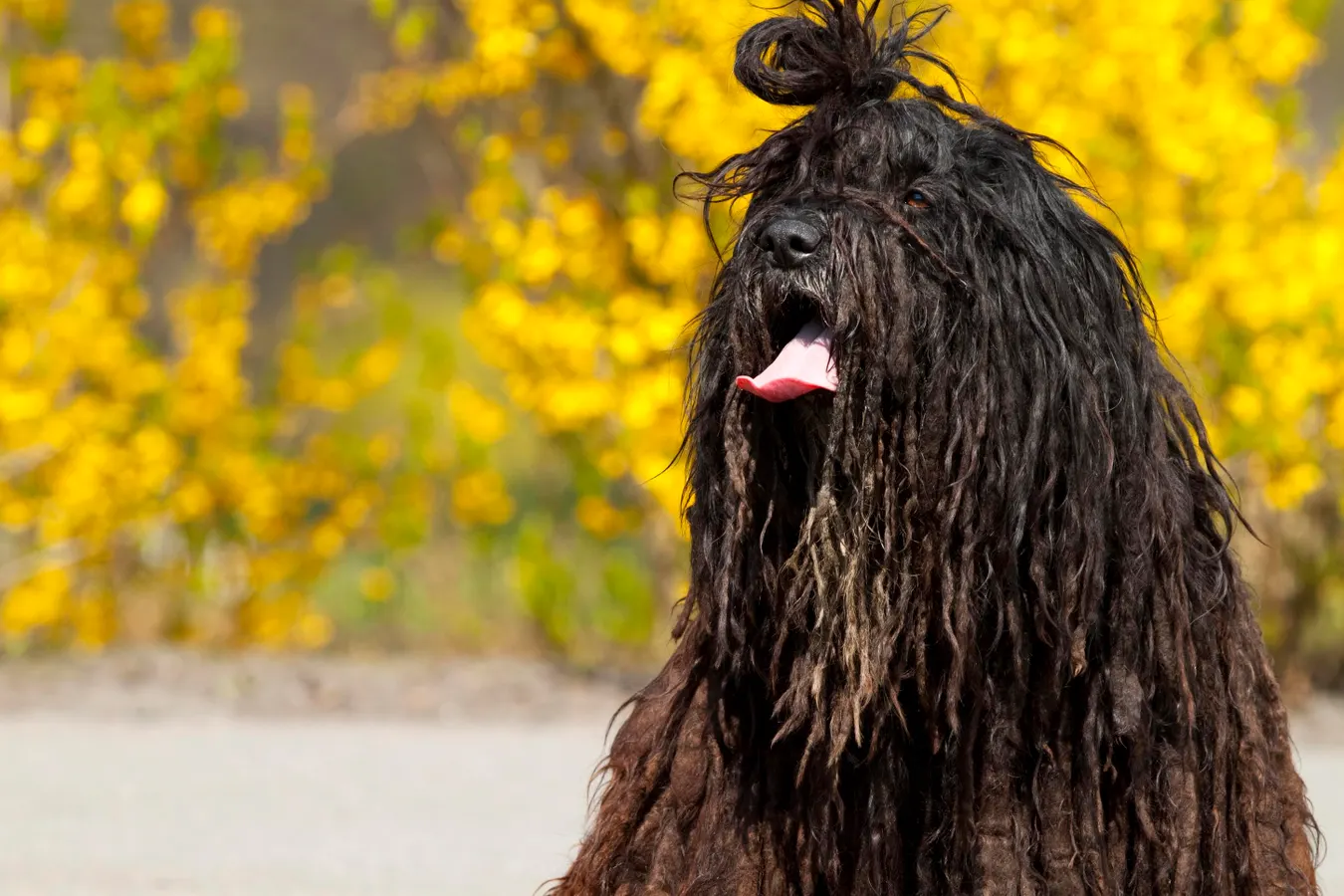A Biologist Reveals The 3 Most Popular Dog Breeds In The United States — And The 3 Least Popular
By Contributor,Scott Travers
Copyright forbes

The American Kennel Club tracks stats on which breeds of dogs are being registered into their database. Here are the latest numbers on the most, and least, popular dog breeds.
The American Kennel Club (AKC) tracks registrations of purebred dogs. With it, we’re offered a yearly snapshot of which breeds are thriving, and which are nearly disappearing from the American canine landscape.
Some may say breed popularity is a matter of fashion. But in reality, it’s a real-time experiment in artificial selection; your breed of choice will have real-life implications on your dogs’ behavior and health, as well as the bond you have with them.
The most recent data, from 2024, ranks the frontrunners and the laggards. Here’s a breakdown of the biological, cultural and evolutionary forces driving the popularity (and obscurity) of these varying breeds.
The French Bulldog has officially cemented itself as America’s favorite breed, a position it stole by overtaking the Labrador in 2022. Given its small body, minimal grooming needs and low-exercise lifestyle, the Frenchie is perhaps the perfect companion if you’re a city dweller or a first-time dog owner.
The 3 Most Popular Dog Breeds In The U.S.
1. French Bulldog
MORE FOR YOU
With its signature bat ears and squishy face, the French Bulldog charms everyone it meets—no translation required.
But from a biological standpoint, the French Bulldog is a case study in trade-offs. As research from Canine Genetics and Epidemiology explains, selective breeding has left the French Bulldog with highly emphasized brachycephalic features — which, in other words, gives them their classic, short-muzzled look.
This results in a face that appeals greatly to humans’ innate attraction to “infantile” looking traits, like big eyes and flat faces. Yet, it’s important to note that those very same traits are consistently linked to chronic health issues. The French Bulldogs cutest features are what also leave it with severe breathing difficulties, spinal deformities and reproductive problems.
Frenchies are perhaps the greatest example of how aesthetic selection can very quickly start to outpace functional biology. Their immense popularity raises some very pertinent ethical questions regarding breed standards and long-term welfare.
2. Labrador Retriever
Three labrador retriever dogs, basking in the sun.
After more than three decades at the top of the list, the Labrador Retriever now sits at #2. Yet, unsurprisingly, it remains a beloved family dog. You might consider Labs as the Swiss Army knife of dog breeds: they’re friendly, trainable, adaptable and well formed.
Considering that they were originally bred as working dogs, it comes as no surprise that this breed has retained its high energy, water-loving nature and cooperative temperament, as research from Applied Animal Behavior Science notes. Their evolutionary success has been shaped by their longstanding close partnership with humans; this has equipped them with a trait known as “biddability,” which makes them particularly successful in instruction-heavy service roles.
Labradors exemplify one of the greatest alignments between human needs and canine biology. Yet, in some areas of the world, their popularity has also given rise to overbreeding. This, in turn, has contributed to rising rates of hip dysplasia and obesity. As such, responsible breeding and owner education are crucial for Labs to sustain their most loveable traits.
3. Golden Retriever
Friendly, loyal and always ready for fetch, the labrador retriever is the ultimate companion in both play and heart.
Golden Retrievers have long been associated with American family life. It makes perfect sense for them to remain in the top three ranking, given their calm demeanors, impressive intelligence and great sociability. Their high scores on social cognition tests make them especially adept at interpreting human cues, which is a likely reason as to why they excel as therapy and assistance dogs.
Their friendliness is one of many results of decades worth of selective breeding for low aggression and high affiliative behavior. However, as further research from Canine Genetics and Epidemiology notes, Goldens are also among the breeds with the highest cancer rates. This is a serious genetic vulnerability, which is only compounded by their limited gene pool and the popularity of certain bloodlines.
Still, from an evolutionary lens, their enduring appeal emphasizes just how strongly emotional connection and behavioral compatibility drive human-animal relationships.
The 3 Least Popular Dog Breeds in the U.S.
1. English Foxhound
The English Foxhound were once essential to aristocratic British hunts, but they’re now among the least popular dog breeds on the AKC registry. They’re bred to run for miles in a pack while chasing foxes across countryside estates. This means they’re built for endurance and pack cooperation, and less so for cuddling on the couch.
Many modern dog owners simply don’t have the space, time, energy or need for a dog with this kind of high-octane drive. Foxhounds are somewhat less people-oriented than retrievers or shepherds are, given their working instincts. This makes them arguably poorly suited to modern American family life.
What’s fascinating, however, is how quickly Foxhounds have declined in relevance. Although they’re still regarded as essential and necessary to huntsmen — as research from the book Animals in Person notes — without fox hunts or vast countryside estates, the Foxhounds become, in essence, biologically overqualified for modern life.
Ironically, however, one of their closest relatives sits hundreds of spots higher up on the list, at #7: the Beagle.
2. Bergamasco Shepherd
A Bergamasco shepherd stands on the grass in the park.
The Bergamasco Shepherd is one of the most striking and ancient herding breeds around. They’re known for their dense, felted coat that naturally mat into locs, which protect it from both the cold and from predators.
Originating in the Italian Alps, near Bergamo, this dog was bred for long days guarding livestock, as research from Animal explains. Yet, despite its intelligence and loyalty, the Bergamasco ranks near the bottom in AKC registrations, and serves mostly as a show dog. Likely, this is due to its unusual grooming needs, reserved demeanor, herding instincts and, most of all, incredibly unique appearance. In all, Bergamascos aren’t ideal for all families.
The Bergamasco hasn’t been heavily modified for aesthetics in the same way many other breeds have. This could be the overarching reason behind its low popularity in such a pet-driven world; usually, how photogenic a dog is will, unfortunately, outweigh their work ethic.
3. Grand Basset Griffon Vendéen
A grand basset griffon vendéen hopping over a fallen tree.
Another dog at the bottom of the list is the Grand Basset Griffon Vendéen (GBGV), a French scent hound bred for hunting small game. They’re well-known for their long bodies, shaggy coats and husky barks, and they’re both highly capable trackers and companions. Yet, despite their many redeeming qualities, they’re rarely seen outside of France.
Its obscurity can most likely be attributed to lifestyle mismatches. The GBGV is a pack dog, and they also demand regular exercise and mental stimulation. Without a second dog — or even a cat — as a companion, and without regular attention, walks and runs, the GBGV won’t be particularly happy.
These factors, along with their lack of the typical “cute factor” that tends to drive popularity on social media, make them unsuited to most suburban American families. Yet, their friendly, playful dispositions make them true hidden gems for the right kind of owner.
Are you an animal lover who owns a pet? Take the science-backed Pet Personality Test to know how well you know your little friend.
Editorial StandardsReprints & Permissions



